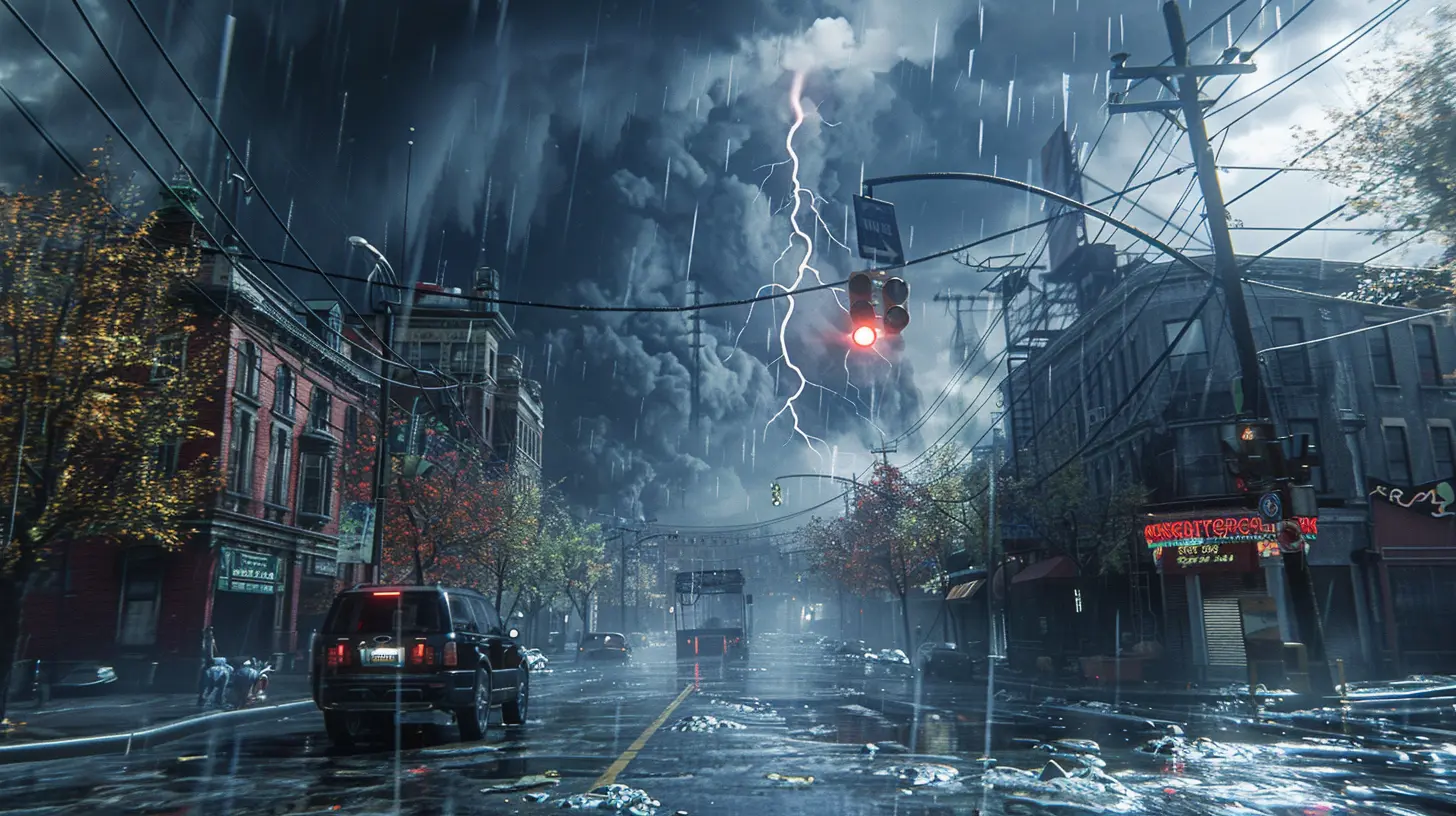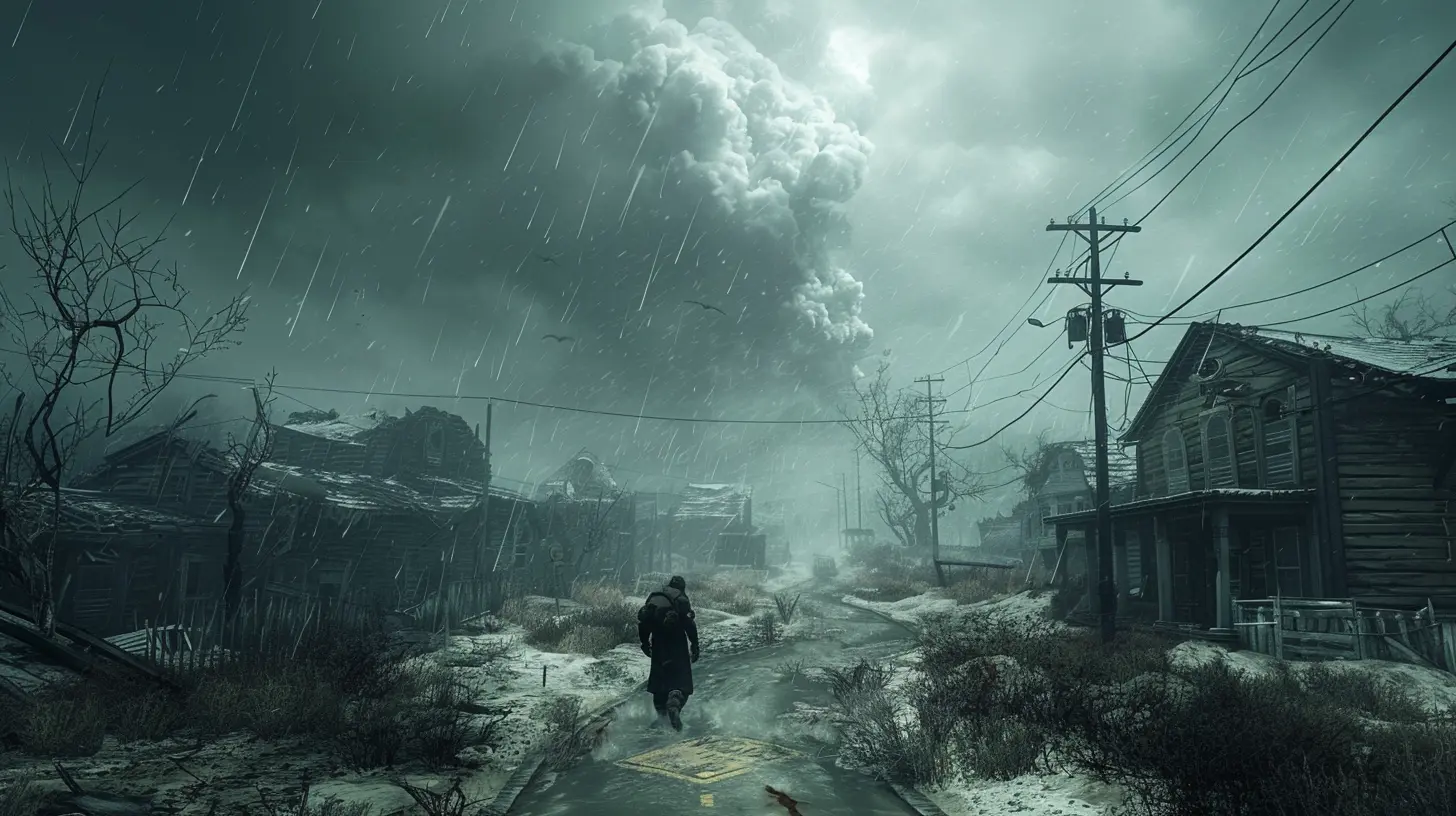Dynamic Weather and Its Impact on Open World Games
14 March 2025
When was the last time you got caught in a digital downpour or watched a fiery sunset in a video game that made you stop and just stare? That’s the magic of dynamic weather in open world games—a feature that’s no longer just a "nice-to-have" but a cornerstone of immersive game design. Dynamic weather has been raising the bar in open world games for years now, turning static environments into living, breathing worlds. But how much impact does it actually have? Spoiler alert: A lot. Let’s break it down.
What Is Dynamic Weather in Games?
First off, let’s get on the same page. Dynamic weather refers to the ever-changing, unpredictable weather systems built into a game. Think about how the skies can shift from sunny and clear to stormy and ominous without warning. It’s not just about rain or snow—cloud movement, wind, fog, and even temperature shifts all play into dynamic weather systems.It's the gaming equivalent of Mother Nature showing off, and honestly, it works. Developers use these systems to create an illusion of unpredictability, making the world feel alive. Without it, open world games tend to feel... static, like you’re trapped in a snow globe. 
Why Does Dynamic Weather Matter?
Sure, it looks cool, but let’s dig deeper. Why does this feature matter so much? Why are developers sinking time, money, and resources into something as "optional" as weather effects? Here’s the thing: it’s not optional anymore. Players expect it.1. Immersion Levels Go Through the Roof
You ever notice how games feel more alive when weather is done well? One minute you’re trekking through a sunny forest, and the next, clouds roll in, and the rain starts pouring. Suddenly, the world feels real.Weather plays with your senses. You hear the pitter-patter of raindrops. You see lightning illuminate landscapes. You feel the tension of a storm brewing as you climb a mountain. It’s almost like the weather is another character in the game.
Take Red Dead Redemption 2, for example. The weather isn’t just a visual flex by Rockstar Games. It directly enhances the player’s connection to the game world. When a thunderstorm hits, the surroundings transform entirely. Puddles form, visibility drops, NPCs react, and you feel like you’re braving the elements instead of just playing a game. That’s hard to beat.
2. Dynamic Weather Creates Gameplay Variety
Let’s be real—open world games can get repetitive. Fetch quest after fetch quest, anyone? But throw in a bit of unpredictable weather, and you’ve got yourself a curveball.Imagine you’re on a mission that involves sneaking past guards in a wide-open field. If it starts raining, the sound of the rain could mask your footsteps. Fog could give you more cover. On the flip side, a sudden storm might force you to change strategies entirely.
Games like The Legend of Zelda: Breath of the Wild take this idea and run with it. Rain in BOTW isn’t just visual; it’s gameplay-critical. You can’t climb slippery surfaces when it’s raining. Thunderstorms? Don’t even think about equipping metal weapons unless you want to get zapped. These systems encourage you to adapt, which keeps gameplay fresh and engaging.
3. Storytelling Gets a Serious Boost
Weather isn’t just eye candy; it’s a storytelling tool. Ever noticed how many epic confrontations in games are set during a thunderstorm? There’s something about stormy weather that screams "big moment incoming."Think of The Witcher 3: Wild Hunt. The game’s dynamic weather shifts aren’t just aesthetic—they match the tone of the narrative. Sunny weather for peaceful villages, stormy skies for looming danger, and misty mornings for eerie forests. Developers deliberately use these cues to set the mood and guide your emotions without saying a word.
It’s like when you’re watching a movie and the music swells during a dramatic scene. Weather does the same thing in games, but without needing an orchestra. 
The Technical Side of Dynamic Weather
Okay, so we’ve established why dynamic weather rocks, but let’s not ignore the tech involved. Because, honestly? Pulling this off is no small feat.Dynamic weather systems rely on some serious coding wizardry. Developers use algorithms to simulate realistic weather patterns based on factors like time of day, region of the map, or even player actions. Advanced engines, like Unreal Engine 5 and proprietary systems like Rockstar’s RAGE engine, enable developers to add the smallest details, like the way the wind ripples through fields or how snow accumulates on surfaces.
But here’s the catch: all these moving parts demand a lot from hardware. That’s why games like Cyberpunk 2077 had to scale back their weather systems on older consoles. Implementing weather isn’t just a creative challenge—it’s a technical balancing act. 
The Dark Side of Dynamic Weather
For all its benefits, dynamic weather isn’t perfect. Sometimes, it can do more harm than good.1. Performance Issues
Let’s face it—dynamic weather can be a performance hog. Older systems struggle to keep up, and even newer consoles have their limits. If you’ve ever experienced frame drops during a rainstorm in a game, you know what I’m talking about.This is especially true for players on lower-end PCs. Weather effects, like heavy rain or dense fog, often strain GPUs, leading to laggy gameplay. It’s a buzzkill, for sure.
2. Gameplay Frustrations
Not everyone loves unpredictable weather. Sure, it adds realism, but it can also mess with your plans. Imagine grinding out an in-game task only to have rain or snow make it 10 times harder. Fantastic for immersion, but a nightmare for players who just want to get stuff done.Some games, like Assassin’s Creed Odyssey, neutralize this issue by having weather be purely cosmetic. But then you lose out on the gameplay depth that dynamic weather can bring. It’s a tricky balance, and not every game nails it.
What's Next? The Future of Dynamic Weather
As gaming technology evolves, so will dynamic weather. AI-driven weather patterns, real-world weather integration, and even more interactive systems are just around the corner. Imagine a game that mirrors real-world weather conditions in your location. Rainy day outside? It’s raining in the game, too.Ray tracing is also adding new layers of realism to weather systems. We’re already seeing this in games like Cyberpunk 2077, where puddles reflect neon lights and droplets scatter realistically. As ray tracing becomes standard, the line between in-game weather and reality will only blur further.
Final Thoughts
Dynamic weather isn’t just a visual trick—it’s a game-changer for open world games. It enhances immersion, spices up gameplay, and adds emotional weight to storytelling. Sure, it has its flaws, but when done right, it can elevate a game from good to unforgettable.So, the next time you’re riding through a thunderstorm or watching snowflakes swirl in an open world game, take a moment to appreciate the work behind it. It’s more than just pixels—it’s what makes the world feel alive.
all images in this post were generated using AI tools
Category:
Open World GamesAuthor:

Jack McKinstry
Discussion
rate this article
5 comments
Ainsley Cruz
Dynamic weather can significantly enhance immersion and gameplay in open-world games. It influences player strategies, affects NPC behavior, and can even alter the game's environment. By incorporating realistic weather systems, developers create richer experiences, making exploration and interaction more engaging and unpredictable. Exciting times for gamers!
April 15, 2025 at 3:28 PM

Jack McKinstry
Thank you for your insightful comment! I completely agree that dynamic weather adds depth and unpredictability to open-world games, enhancing both player strategy and immersion. It's an exciting development in game design!
Zevonis McManus
Weather in games: because who doesn’t love dodging rain while battling pixelated monsters?
March 26, 2025 at 4:06 AM

Jack McKinstry
Thank you! Dynamic weather adds depth and immersion, enhancing the challenge and excitement of gameplay.
Mia McGill
Dynamic weather in open world games? Finally, I can blame my in-game failures on a freak snowstorm instead of my lack of skills! Mother Nature, you’ve officially joined my gaming excuses team!
March 25, 2025 at 4:47 AM

Jack McKinstry
Absolutely! Dynamic weather adds a layer of realism and unpredictability, making gameplay experiences richer and, as you said, giving players a perfect excuse for those unexpected failures!
Maxwell McFarlane
Dynamic weather significantly enhances immersion in open world games, creating diverse gameplay experiences. It adds realism and unpredictability, enriching player exploration and story engagement.
March 17, 2025 at 5:07 AM

Jack McKinstry
Thank you! I completely agree—dynamic weather truly elevates immersion and enriches the overall gaming experience, making exploration more engaging and unpredictable.
Maura Sharp
Great article! The exploration of dynamic weather and its influence on gameplay in open world games is fascinating. It adds depth and realism, enhancing player immersion. I appreciate how you highlighted specific examples; they really illustrated the potential of this feature in evolving game design. Looking forward to more insights!
March 14, 2025 at 3:55 AM

Jack McKinstry
Thank you for your kind words! I'm glad you found the exploration of dynamic weather's impact on gameplay insightful. Stay tuned for more!




